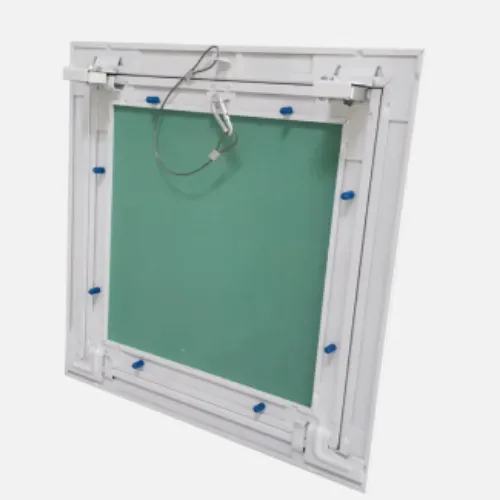Dec . 15, 2024 20:03 Back to list
gypsum grid ceiling
Understanding Gypsum Grid Ceilings A Comprehensive Overview
In the world of modern interior design and construction, gypsum grid ceilings have gained significant momentum due to their versatile applications, aesthetic appeal, and functional benefits. This article delves into the concept of gypsum grid ceilings, exploring their composition, advantages, installation methods, and their role in contemporary spaces.
What is a Gypsum Grid Ceiling?
A gypsum grid ceiling is a suspended ceiling system that consists of a framework of metal or wooden grids that support gypsum board panels. The gypsum board, typically made from gypsum plaster sandwiched between layers of paper, is known for its fire-resistant properties and excellent sound insulation. The grid system allows for flexibility in design while providing a clean, streamlined look that can enhance the ambiance of any room.
Advantages of Gypsum Grid Ceilings
1. Aesthetic Appeal One of the primary reasons for selecting gypsum grid ceilings is their visual attractiveness. They come in various designs, textures, and finishes that can complement any interior style—be it contemporary, traditional, or industrial. The use of color and lighting can further elevate the design, creating stunning visual effects.
2. Acoustic Properties Gypsum board has sound-dampening qualities, making it an excellent choice for spaces that require quiet and tranquility, such as offices, schools, theaters, and hospitals. The suspended nature of the ceiling also allows for the installation of additional soundproofing materials within the grid system.
3. Fire Resistance Gypsum is inherently fire-resistant due to the chemical composition of its mineral content. In the event of a fire, gypsum board creates a protective barrier that helps slow down the spread of flames, contributing to the safety of occupants in a building.
4. Ease of Installation and Maintenance Gypsum grid ceilings are relatively easy to install, as they do not require extensive structural support. The grid system allows for the quick addition or replacement of panels, which is particularly beneficial for maintenance or upgrades. Furthermore, access to the ceiling space for electrical and HVAC installations is made simpler, as panels can be removed easily.
gypsum grid ceiling

5. Energy Efficiency These ceilings can enhance energy efficiency in a building. By incorporating insulation materials into the ceiling assembly, they can help regulate temperature, reducing the need for excessive heating or cooling.
Installation Process
The installation of gypsum grid ceilings begins with the preparation of the space. A professional installer typically marks the layout on the walls and ceiling where the grid will be placed. Metal T-bars or wooden supports are then fixed to the framework, followed by the installation of gypsum panels. The panels are secured in place and can be finished with paint, texture, or other treatments to achieve the desired look.
Applications of Gypsum Grid Ceilings
Gypsum grid ceilings are employed in a multitude of settings, including
- Commercial Spaces Offices, retail stores, and shopping malls utilize gypsum grid ceilings for their aesthetic appeal and acoustic benefits, creating comfortable environments for employees and customers alike. - Educational Institutions Schools and universities benefit from the sound-dampening properties of gypsum ceilings, which support a conducive learning atmosphere. - Healthcare Facilities Hospitals and clinics utilize their fire-resistant properties and ease of maintenance, ensuring the safety and comfort of patients and staff.
Conclusion
In summary, gypsum grid ceilings represent a convergence of functionality and style in modern construction and design. With their aesthetic versatility, acoustic advantages, fire safety features, and ease of maintenance, they are a popular choice for a wide range of interior spaces. Whether it is for a commercial office, an educational institution, or a health facility, the implementation of gypsum grid ceilings can significantly enhance both the practicality and beauty of a space. Their growing popularity is a testament to their ability to meet the demands of contemporary architectural practices while providing a comfortable and appealing environment for occupants.
-
Durable Ceiling T Grid Systems | Easy InstallationNewsAug.29,2025
-
PVC Gypsum Ceiling: Durable, Laminated Tiles for Modern SpacesNewsAug.28,2025
-
Pvc Gypsum Ceiling Is DurableNewsAug.21,2025
-
Mineral Fiber Board Is DurableNewsAug.21,2025
-
Ceiling Tile Clip Reusable DesignNewsAug.21,2025
-
Ceiling T Grid Modular DesignNewsAug.21,2025







